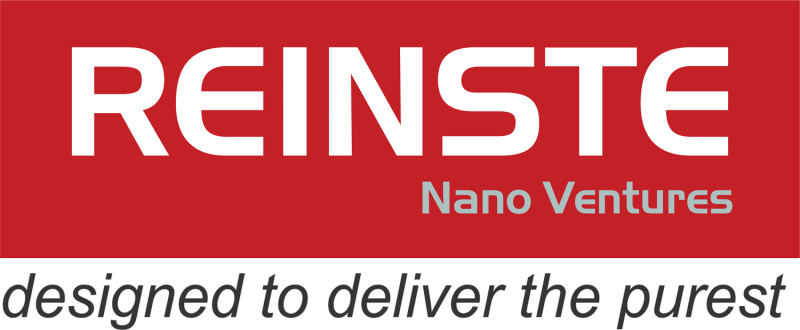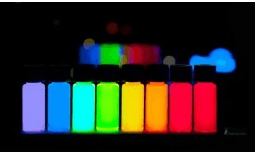The Dawn of Intelligent Glazing: An Introduction for Indian Innovators
In the quest for sustainable development and energy independence, India stands at a critical juncture. With a booming construction sector and a climate that demands significant energy for cooling, innovative building materials are not just a luxury—they are a necessity. Enter smart windows, a transformative technology poised to redefine our relationship with the built environment. At the heart of this revolution lies a marvel of nanotechnology: quantum dots (QDs).
This article provides an in-depth exploration of quantum dots for smart window technology, tailored for the Indian research and development community, architects, and material scientists. We will delve into how these minuscule semiconductor crystals are enabling unprecedented light control and energy efficiency in modern glazing, and what this means for the future of architectural design in India.
Traditionally, windows have been a building's weak point in terms of thermal insulation. They let in heat during scorching summers, leading to skyrocketing air conditioning costs, and allow heat to escape during the winter. Smart windows, also known as switchable or dynamic windows, offer a solution. They can alter their light transmission properties in response to environmental stimuli. While technologies like electrochromics and liquid crystals have been pioneers, quantum dots bring unique advantages to the table, including color purity, tunability, and the potential for lower-cost manufacturing—factors that are especially pertinent to the Indian market.
Why Quantum Dots? Key Benefits for Researchers and Developers
For researchers in nanotechnology and material science, quantum dots offer a fertile ground for innovation. Their unique properties open up a plethora of research avenues with direct applications in building materials.
- Precise Spectral Tuning: Unlike bulk materials, the optical properties of quantum dots can be precisely tuned by changing their size. This allows for the design of smart windows that can selectively block infrared (IR) radiation (heat) while remaining transparent to visible light, a concept known as a transparent thermal insulator.
- High Photoluminescence Quantum Yield (PLQY): Quantum dots are highly efficient at absorbing light and re-emitting it at a different wavelength. This property is key for creating luminescent solar concentrators (LSCs), where a QD-infused window can absorb sunlight and guide it to solar cells at the window's edge, turning the entire glazing surface into a power generator.
- Versatile Integration: QDs can be dispersed in various polymers and coatings, making them relatively easy to integrate into existing window manufacturing processes. This versatility reduces the barrier to entry for developing and scaling up intelligent windows.
- Potential for Low-Cost Synthesis: Advances in colloidal synthesis methods are making the production of high-quality quantum dots more cost-effective and scalable, a crucial factor for widespread adoption in price-sensitive markets like India.
Architectural and Industrial Applications: Building a Smarter Future
The application of quantum dots in smart windows extends across various sectors, each benefiting from enhanced solar control and dynamic functionality. This is not just theoretical; it's a practical solution to real-world energy challenges.
Commercial & High-Rise Buildings
In corporate offices and skyscrapers, facade glazing is extensive. QD-based smart windows can dramatically reduce the solar heat gain, cutting down HVAC (Heating, Ventilation, and Air Conditioning) energy consumption by up to 40%. This leads to lower operational costs and helps buildings meet green certification standards (like LEED or GRIHA in India).
Residential Sector
For homes, smart windows offer a blend of comfort and efficiency. They can automatically tint during the hottest part of the day to reduce glare and heat, and become clear in the evening or on cloudy days to maximize natural light, enhancing occupant well-being and reducing electricity bills.
Automotive Glazing
The technology can be applied to car sunroofs and windows to reduce heat buildup inside a parked vehicle and decrease the load on the air conditioning system while driving, thereby improving fuel efficiency or electric vehicle range.
Smart Greenhouses
In agriculture, QD smart windows can optimize the light spectrum reaching the plants, blocking harmful UV and excess IR light while promoting wavelengths that are best for photosynthesis. This can lead to increased crop yields and more efficient, climate-controlled farming.
The Indian Context: Opportunities, Trends, and the Path Forward
India's ambitious goals for renewable energy and sustainable urban development create a fertile market for quantum dot smart window technology. The government's 'Smart Cities Mission' and 'Make in India' initiatives provide a strong policy backdrop for domestic R&D and manufacturing of advanced building materials.
A significant trend is the growing demand for green buildings. Developers and consumers are increasingly aware of the long-term benefits of energy efficiency. Here, nanotechnology offers a competitive edge. Indian research institutions and startups can collaborate to develop QD-based films and coatings that can be retrofitted onto existing windows, a massive market opportunity. The focus should be on creating robust, cost-effective solutions tailored to the diverse Indian climate, from the humid south to the dry, hot north.
Furthermore, the development of cadmium-free quantum dots (like those based on InP or perovskites) aligns with global environmental regulations and presents a key research area. By focusing on these safer, more sustainable materials, Indian innovators can position themselves as leaders in the next generation of solar control and intelligent window technologies. Access to high-quality, research-grade quantum dots is the first step in this journey, enabling scientists to experiment, prototype, and perfect these advanced architectural applications.
Frequently Asked Questions
Quantum dot smart windows are advanced glazing products that incorporate a layer of quantum dots (semiconductor nanocrystals) to control the amount of light and heat passing through. They can dynamically switch between transparent and tinted states, offering superior solar control and energy efficiency compared to traditional windows.
By selectively blocking near-infrared (heat-generating) radiation while allowing visible light to pass through, quantum dot smart windows reduce the need for artificial cooling in hot climates like India's. This significantly lowers electricity consumption from air conditioning, leading to substantial energy savings and a smaller carbon footprint.
The technology is still in advanced stages of research and development, with some companies globally offering initial products. For the Indian market, it represents a significant emerging opportunity. Researchers and companies in India can leverage materials like those from Hiyka to develop and commercialize this technology for local conditions.
Active smart windows require an external electrical stimulus to change their properties (e.g., electrochromic windows). Passive smart windows, like some quantum dot applications, can respond automatically to environmental changes like temperature (thermochromic) or light intensity (photochromic) without needing external power.




